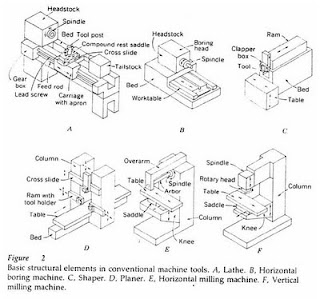However, for the foreseeable future, drawings of various kinds will still be used elsewhere in the design process. Even if the final description is to be in the form of a string of digits, the designer will probably want to make drawings for other purposes.
One of the most important of these other purposes is the checking, or evaluating, of design proposals before deciding on a final version for manufacture. The whole point of having the process of design separated from the process of making is that
proposals for new artefacts can be checked before they are put into production. At its simplest, the checking procedure might merely be concerned with, say, ensuring that different components will fit together in the final design; this is an attempt to foresee possible errors and to ensure that the final design is workable. More complicated checking procedures might be concerned with, say, analysing the forces in a proposed design to ensure that each component is designed to withstand the loads on it (Figure 2); this involves a process of refining a design to meet certain criteria such as maximum strength, or minimum weight or cost.
This process of refinement can be very complicated and can be the most time-consuming part of the design process. Imagine, for example, the design of a bridge. The designer must first propose the form of the bridge and the materials of which it will be made.
In order to check that the bridge is going to be strong enough and stiff enough for the loads that it will carry, the designer must analyse the structure to determine the ways in which loads will be carried by it, what those loads will be in each member of the structure, what deflections will occur, and so on. After a first analysis,
the designer might realize, or at least suspect, that changing the locations or angles of some members in the bridge will provide a more efficient distribution of loadings throughout the whole structure. However, these changes will mean that the whole structure will have to be re-analysed and the loads recalculated.
In this kind of situation it can be easy for the designer to become trapped in an iterative loop of decision-making, where improvements in one part of the design lead to adjustments in another part which lead to problems in yet another part. These problems may mean that the earlier 'improvement' is not feasible. This iteration is a common feature of designing.
Nevertheless, despite these potential frustrations, this process of refinement is a key part of designing. It consists, firstly, of analysing a proposed design, and for this the designer needs to apply a range of engineering science or other knowledge. In many cases, specialists with more expert knowledge are called in to carry out
these analyses. Then, secondly, the results of the analysis are evaluated against the design criteria: does the design come within the cost limit, does it have enough space within it, does it meet the minimum strength requirements, does it use too much fuel, and so on. In some cases, such criteria are set by government regulations, or by industry standards; others are set by the client or customer.
Many of the analyses are numerical calculations, and therefore again it is possible that drawings might not be necessary. However, specialists who are called in to analyse certain aspects of the design will almost certainly want a drawing, or other model of the design, before they can start work. Visualizations of the proposed design may also be important for the client and designer to evaluate aspects such as appearance, form and colour
Engineering Design Methods
Strategies for Product Design
THIRD EDITION
Nigel Cross
The Open University, Mi/ton Keynes, UK
JOHN WILEY & SONS, LTD
Chichester- New York. Weinheim • Brisbane. Singapore. Toronto

















